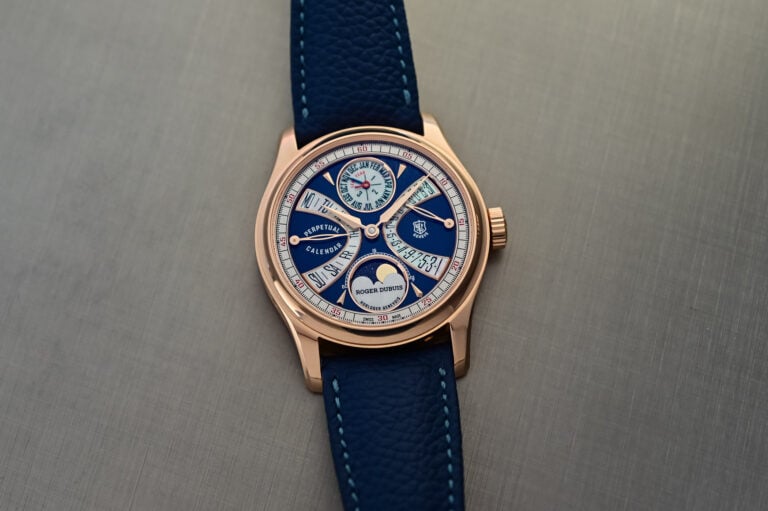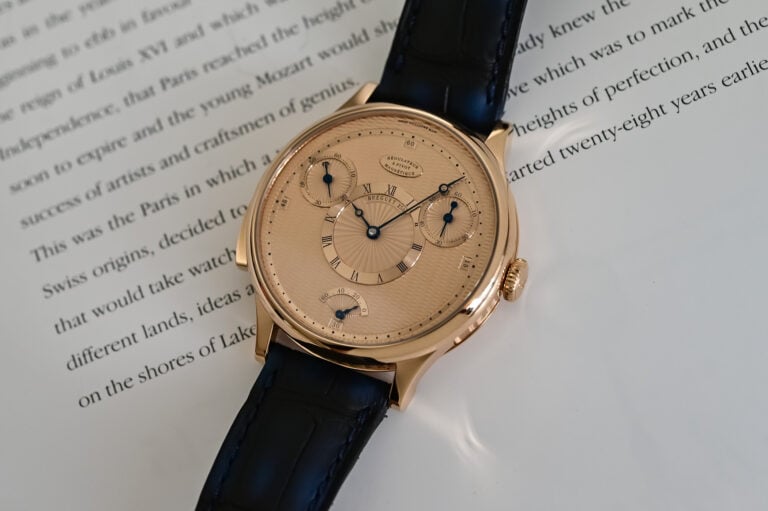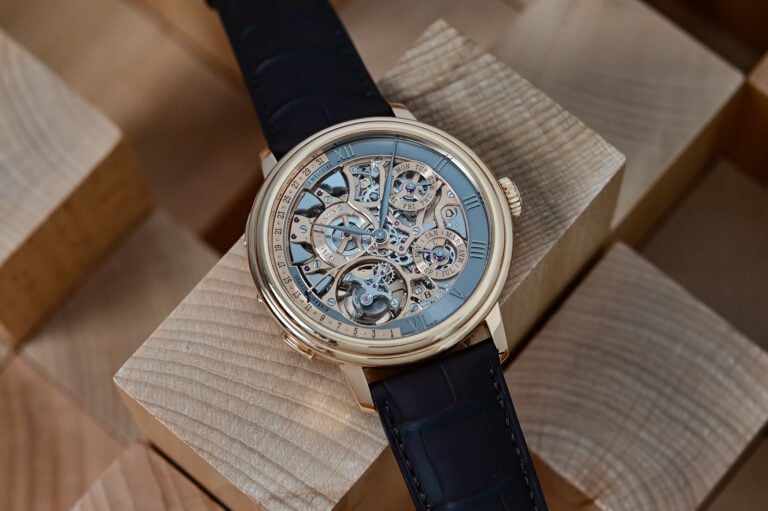The measurement of how many seconds are gained or lost per day, week, month or year from a mechanical or electric movement. Mechanical movements are adjusted to different accuracy grades with the chronometer being the most accurate (maximum deviation of -4 to +6 seconds per day). In addition to a chronometer, there are also watches rated as Master Chronometer (see here)
A small hammer and gong within a mechanical movement that’s usually set via a separate hand on the dial to sound an alarm. A separate, dedicated spring, as power source, is often used for the alarm mechanism to offset its large power consumption.
The measure in degrees of the balance wheel as it rotates in both directions. This back and forth swing should average 270 to 315 degrees, A lower amplitude usually means problems in the gear train, causing too low power flowing to the escapement.
A watch dial with traditional hands and/or other non-digital (LCD) displays.
A traditional finishing technique were a sharp edge is softened and polished by hand, usually reserved for bridges and movement parts. If done perfectly, the angle of the bevel should be 45 degrees. This is also referred to as beveling or chamfering.
A date complication that automatically compensates for 30 and 31 days each month, requiring only one adjustment per year in February.
A watch movement with specialized materials such as silicon or a soft iron cage to resist magnetic fields that could affect accuracy or damage the movement.
Hour markers applied on top of the dial to create a sense of depth, most commonly done in metals. Applied indices can be fixed in place with glue or small pegs set into the dial.
The shaft (or axle) that gears are mounted to in a watch movement.
The most accurate type of clock that uses the resonance frequencies of atoms as the resonator instead of an electronic oscillator via a quartz crystal or mechanical balance. Atomic clocks are accurate to one second every 30 million years or so, while top quartz movements are accurate to a few seconds per month and mechanical movements to a few seconds per day.
A watch featuring a rotor on the movement that spins either one or both ways as the wrist moves throughout the day, winding the mainspring without the need for manually rotating the crown. Also known as self-winding.



